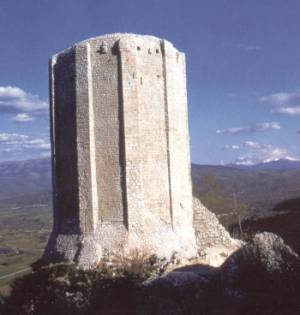|
The beginnings of Leonessa
are linked with the consolidation of the territory of the Kingdom of Naples,
undertaken by the Souabi and brought together by the Angioini family towards
the end of the XIII century: populated essentially by the inhabitants of the
sparse villages dotting the Corno and Nera valleys, the newly founded "territory"
was first given the name Gonessa, probably an ancestor of the Angioini
family, the corrected to Connexa until the affirmation of the name Leonessa.
Included as an integral part
of the security belt created by Carlo and Roberto D'Angiņ, the university
of Gonessa took on a leading role il local history between medieval and
modern times pursuing a politic of mediation and equilibrium between the
Duke of Spoleto, the territory of Saint Peter and the Kingdom of Naples.
During the course of the XVI century, for a short period of time it became a
part of territory of the Church: in 1442 it was distributed evenly to
Accumoli and the City State of Alfonso d'Aragona and Pope Eugene IV until in
1447 when Pope Nicholas V did not recognize its autonomy. Leonessa
maintained each condition of indipendence, sustained, above all,by a
flourishing economy and an active and vital society, until 1539 when it
became subject to Charles V and given as a dowry to Margaret of Austria, who
married the Duke Ottavio Farnese. After remaining, for almost two centuries,
as part of the Farnese State of Abruzzo, in 1731 it became a part of the
Kingdom of Naples, and remained as this until the Risorgimento period spread
through Italy. After the unity of Italy, the Leonessa territory remained an
integral part of the Region of Abruzzo until the institution of the province
of Rieti (1927).


|